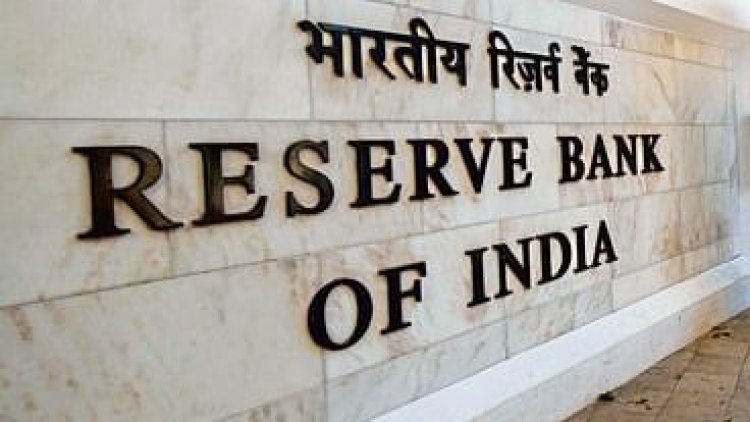Recovery ‘Still to Gather Firm Traction’

The RBI’s Monetary Policy Committee (MPC) has expectedly yet again left benchmark interest rates unchanged and reiterated that it will continue with its accommodative stance, at least into the next fiscal year, in order to secure a sustained economic recovery. The reasoning is that the despite promising signs, ongoing recovery is “still to gather firm traction” making it crucial to provide continued policy support for restoring growth. The sharp deceleration in retail inflation in December, when headline CPI inflation eased to 4.6%, the rollout of the COVID-19 vaccination programme as well as the Union Budget’s proposals to give a boost to infrastructure, and innovation and research, among other things, writes The Hindu “have been recognised as factors likely to restore confidence and lend a fillip to the growth momentum, respectively. Rural demand’s persistent resilience is what the MPC sees undergirding the demand recovery, aided, in its view, by good prospects for agriculture….” although the impasse over the farmer’s agitation “has the potential to disrupt farm output threatening both growth and inflation dynamics.”
Infrastructure push now, fiscal consolidation later
The National Statistical Office has estimated that the economy would shrink by 7.7%. There are other estimates which put the shrinkage at an even higher level. Against this background, the Budget, taken as a whole, has provided reasonable stimulus to growth through a change in the composition of expenditure and other measures to improve the climate for investment.
The budgeted increase in capital outlay would provide the central government’s share to the National Infrastructure Pipeline. However, in the view of C. Rangarajan (former Chairman, Prime Minister’s Economic Advisory Council and former Governor, Reserve Bank of Indi) and. D.K. Srivastava (Chief Policy Adviser, EY India and former Director, Madras School of Economics) “success of the infrastructure expansion plan would depend on other stakeholders of the pipeline playing their due role. These include State governments and their public sector enterprises and the private sector. Some of the proposed Budget initiatives include setting up of a Development Finance Institution (DFI) with an initial capital of ₹20,000 crore, to serve as a catalyst for facilitating infrastructure investment. In order to manage non-performing assets of public sector banks, there is a proposal to set up an Asset Reconstruction Company and an Asset Management Company. These institutional initiatives may prove to be effective. Much depends upon the fine-tuning the operations of these institutions.”
Also “concerns remain about fiscal deficit.”
STATE OF THE ECONOMY
Budget: 2021-22: Investors happy; households not so
CMIE (Centre for Monitoring Indian Economy) has said the value of BSE-30 companies rose five per cent and that of Nifty-50 companies rose 4.7 per cent on the day of the Budget, which is an indicator that investors were evidently happy with the Budget. It is unusual for the value of these companies to rise by more than 2 per cent on an average day, said the article written by CMIE CEO Mayesh Vyas.
Displeasure among households: The CMIE however, observed households expressed displeasure as a week after the budget, the Index of Consumer Sentiments fell 4.2 per cent. "Contrast this with the nearly 9 per cent increase in equity market valuations response to the budget on the bourses. Households were not very impressed with the budget," it added.
The article says the budget may or may not be the reason for household perceptions to worsen week after budget but sentiments have worsened after it. "The proportion of households that believe that the financial and business conditions would improve in the coming year declined from a very low 5.5 per cent in the week before the budget to 4.8 per cent after the budget. Those who believed that conditions would worsen increased from 44.9 per cent before the budget to 46.5 per cent after the budget," the CMIE article said, adding that expectations over five years are equally bad, if not worse.
E-commerce grows by 36 per cent in last quarter in India: Report
The last quarter of 2020 saw e-commerce order volume growing by 36 per cent in India with Personal care, Beauty and Wellness (PCB&W) segment being the biggest beneficiary, according to a report.
In October to December 2020 period, PCB&W and FMCG & Healthcare (F&H) categories' volumes grew by 95 per cent and 46 per cent year-on-year (YOY) respectively, said the Q4- 2020 -E-commerce Trends Report', released by Unicommerce and Kearney. Tier 2 and 3 cities accounted for a 90 per cent YOY incremental volume and value growth, it said.
The report, which assesses the e-commerce growth in Q4 2020 with the sector-wise analysis, said brand websites reported a 94 per cent volume growth in fourth quarter of 2020 as compared to same period last year.
The last quarter of 2020 saw e-commerce grow by 36 per cent and 30 per cent YOY in terms of order volume and gross merchandise value (GMV) respectively, while theaverage order value declined by five per cent in Q4-2020 as compare to same period last year.
The e-commerce industry had reported a 26 per cent order volume growth in Q4-2019 vis-a-vis Q4-2018.
The growth accelerated in light of COVID-19 and the effects of lockdown led to a massive change in consumer habits with many new shoppers and sellers coming online, the report said.
Electronics category witnessed 12 per cent YOY growth in average order value (AOV) in addition to 27 per cent YOY growth in volumes. Fashion and accessories continue to be the largest segment by volume.
The lockdowns and reluctance to venture out resulted in many first-time online grocery shoppers, making it an important category for mainstream e-commerce players like Flipkart and Amazon to actively focus and promote the grocery business.
















